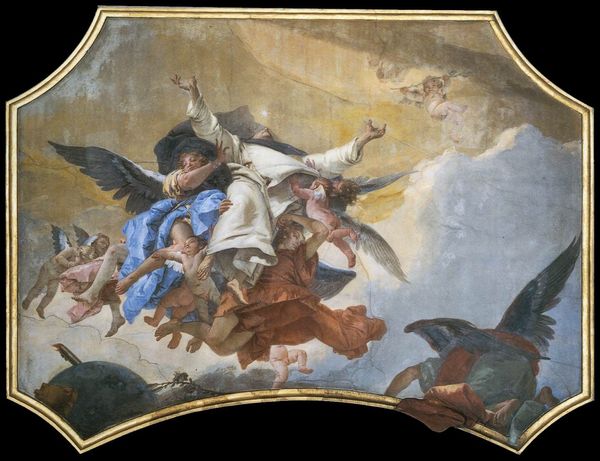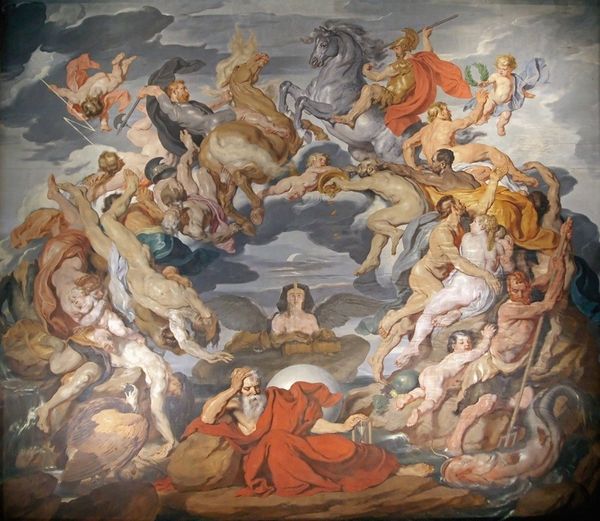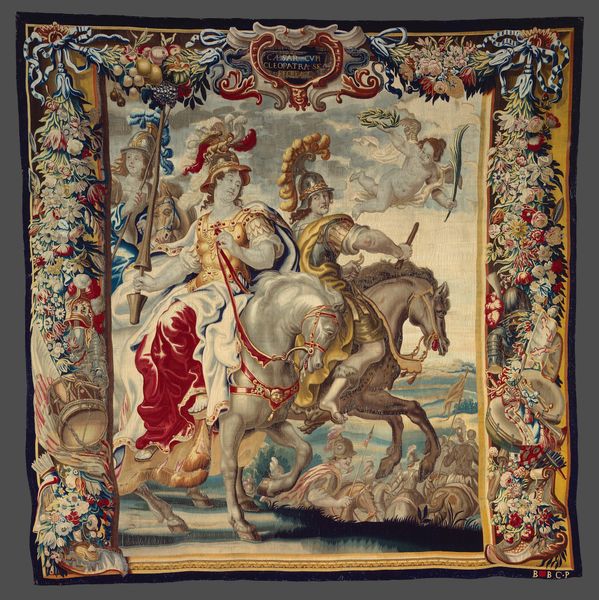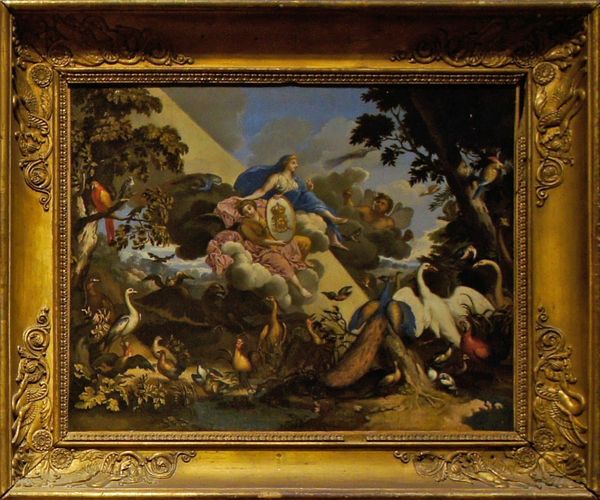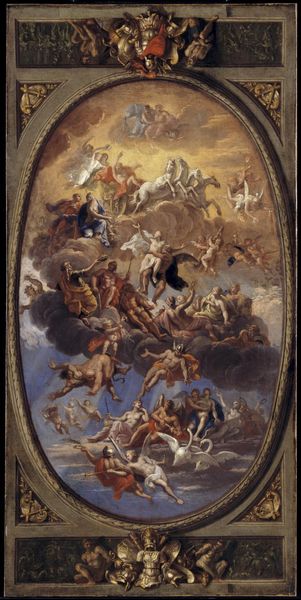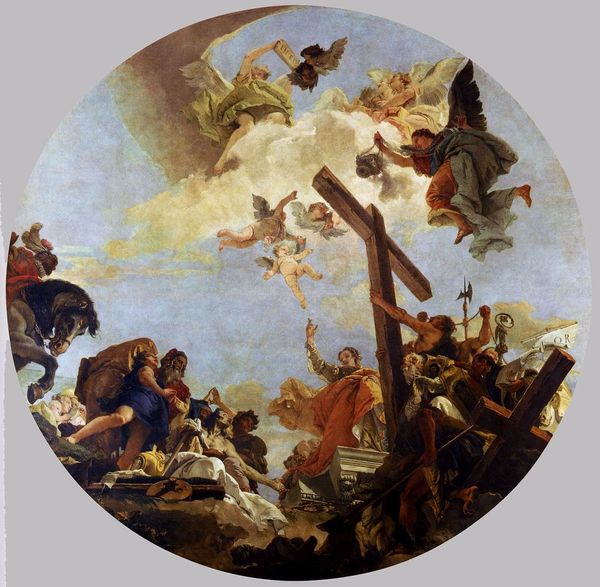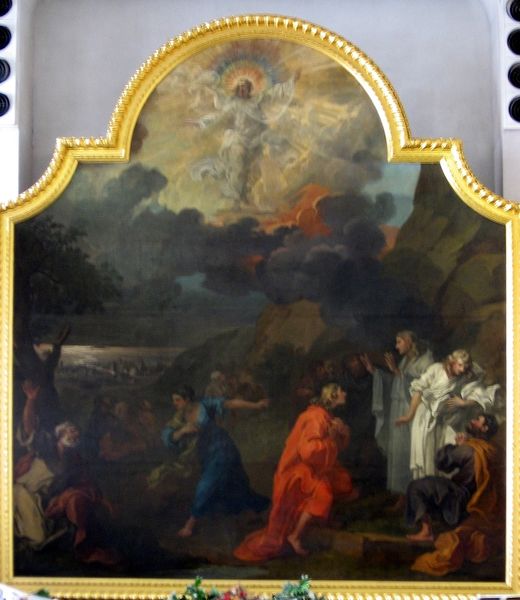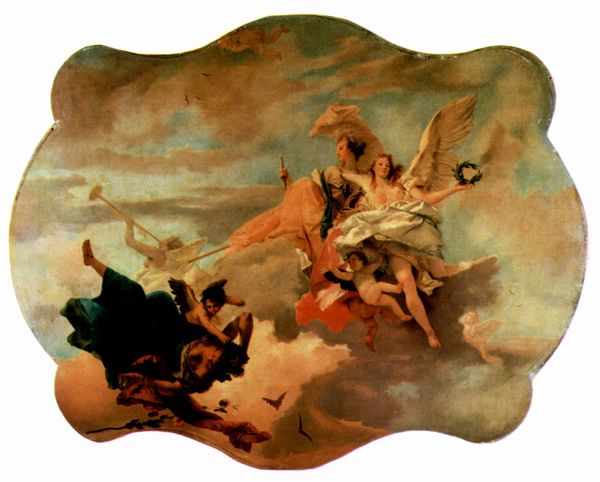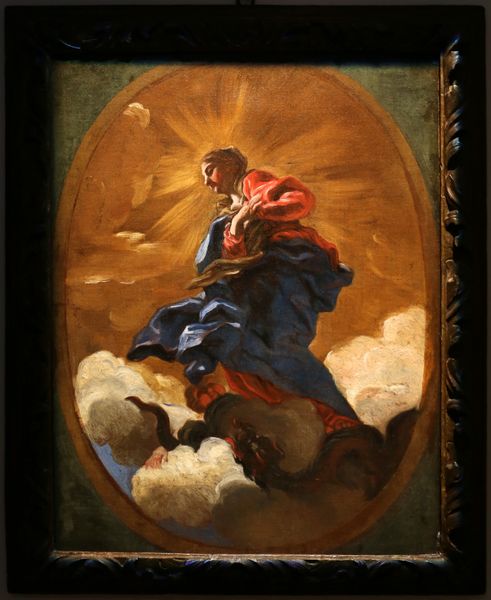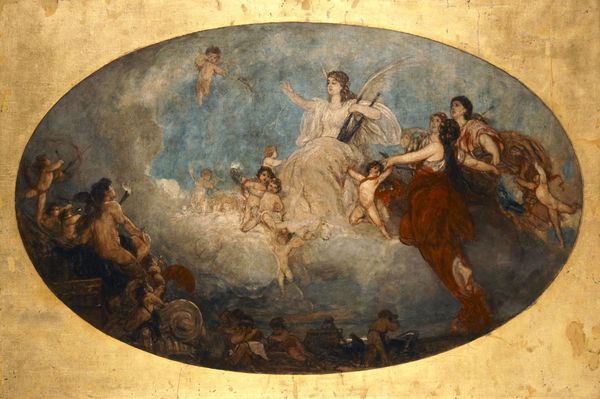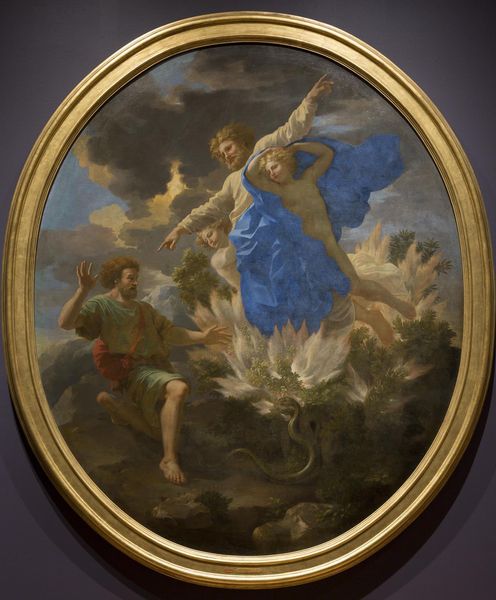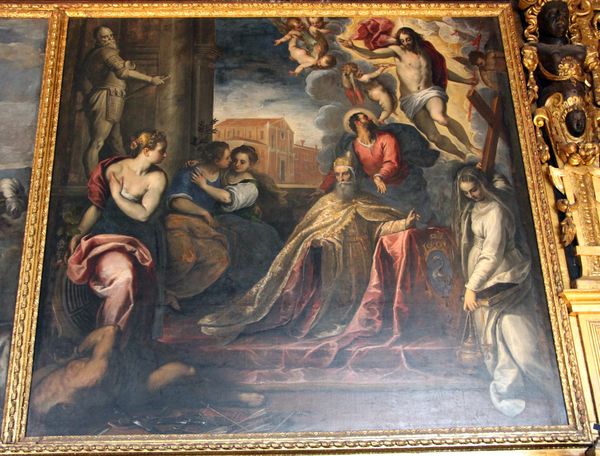
painting, oil-paint
#
allegory
#
baroque
#
painting
#
oil-paint
#
sculpture
#
oil painting
#
history-painting
Copyright: Public domain
Curator: This artwork before us is titled "Gloria Di Santa Marta," created in 1672 by Giovanni Battista Gaulli. It’s an oil painting presenting a heavenly scene. Editor: What immediately strikes me is the sheer exuberance. The swirling figures, the dramatic lighting...it practically leaps off the surface. Curator: Indeed! Gaulli's Baroque style is quite evident. But look closer at how the pigment has been layered. The creation involved a workshop system which depended on assistants to realize such complicated surfaces. This tells a lot about production in 17th century Rome. Editor: And what about the dynamic arrangement? The upward thrust of the composition, anchored by the dark drapery and offset by that background glow. Curator: Notice that Saint Martha, draped in what appears like sapphire blue, is central to it. We see the social relevance: paintings of female saints in this period offer archetypes to be considered in comparison with other representations in society and culture. It served to define their societal expectations while granting some individuals the privilege of social elevation. Editor: Beyond Saint Martha's placement in the composition, consider her posture and expression: the eyes upturned, the hands gesturing upwards—pure devotional ecstasy. And the cherubic figures...a chorus of ethereal praise. The light doesn't simply illuminate; it seems to emanate from within. It invites profound spiritual reflection and awe. Curator: Exactly, because, at the time, painting was used by the Counter-Reformation Church to create images that had social power to help people express strong emotions. We see clear visual manipulation here in the material and composition. Editor: Still, to consider the visual properties...note that Gaulli clearly manipulates light, mass, and volume to achieve an intensified sensation. His deployment of painterly devices suggests both drama and grace in a visually stunning format. Curator: Yes, through a closer look, one realizes art during that era wasn't purely for aesthetic value. Social and class lines determined its availability and who participated in artistic production. It offered social currency. Editor: Ultimately, analyzing his pictorial choices allows one a route to discuss Gaulli's individual creative agency when portraying these historical realities in art. Curator: Considering our points, this artwork provides an ideal case study examining a work and how that reflects how artistic pieces mirror their environment through their creation. Editor: An exemplary convergence of form and meaning that continues to captivate and challenge us today.
Comments
No comments
Be the first to comment and join the conversation on the ultimate creative platform.
